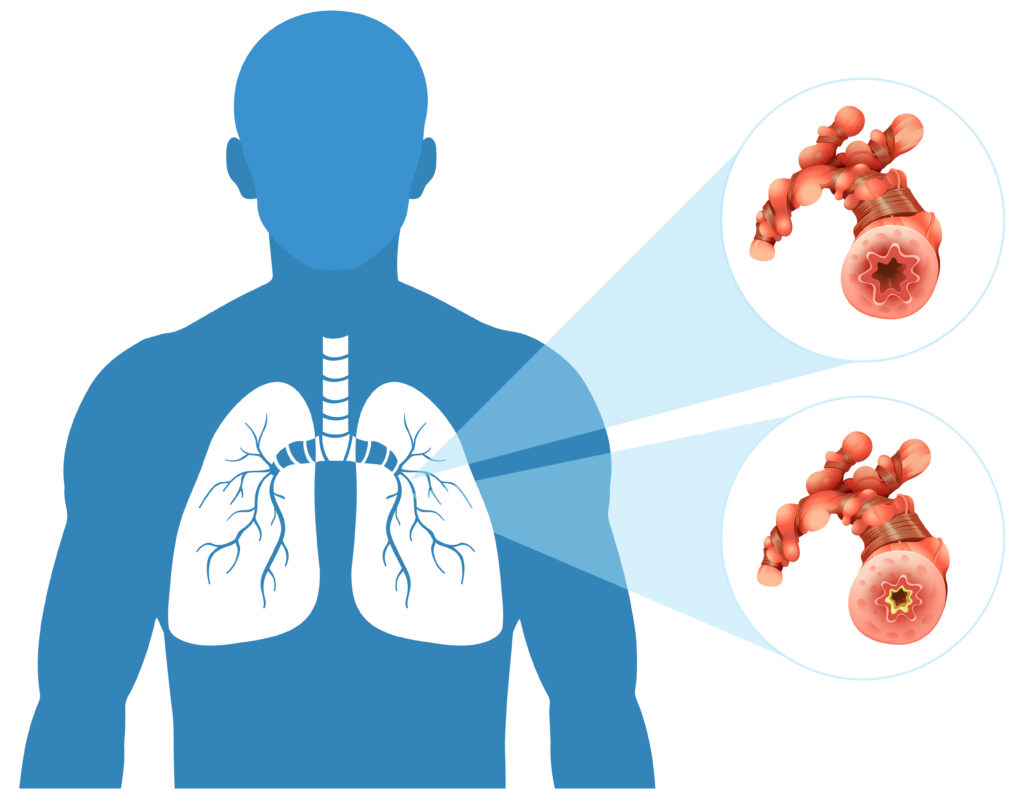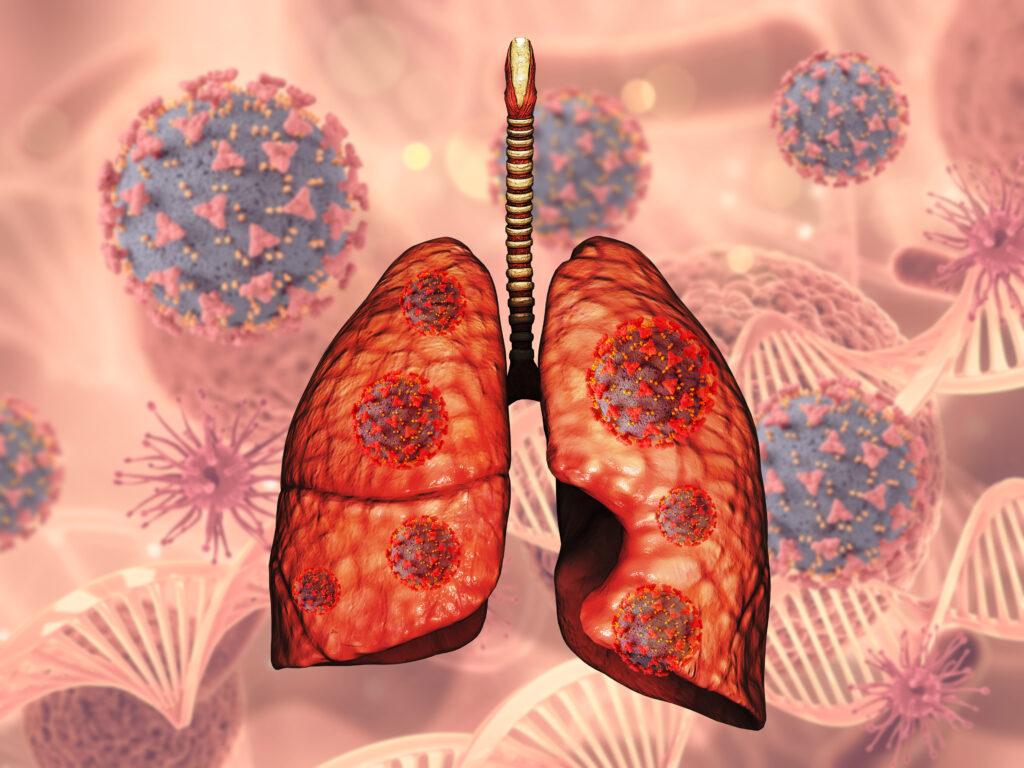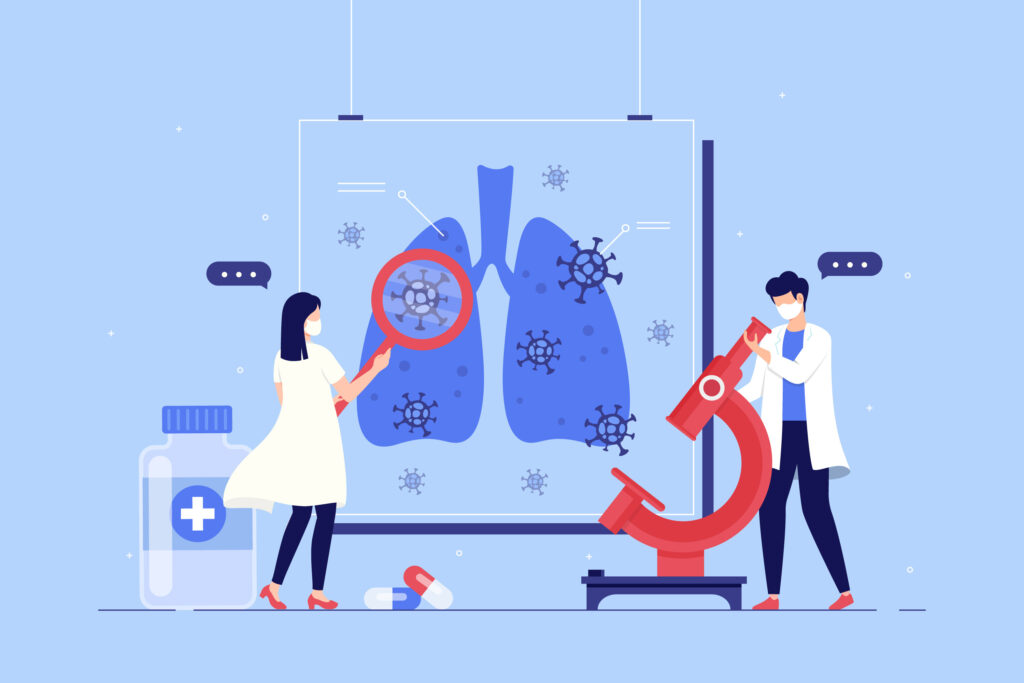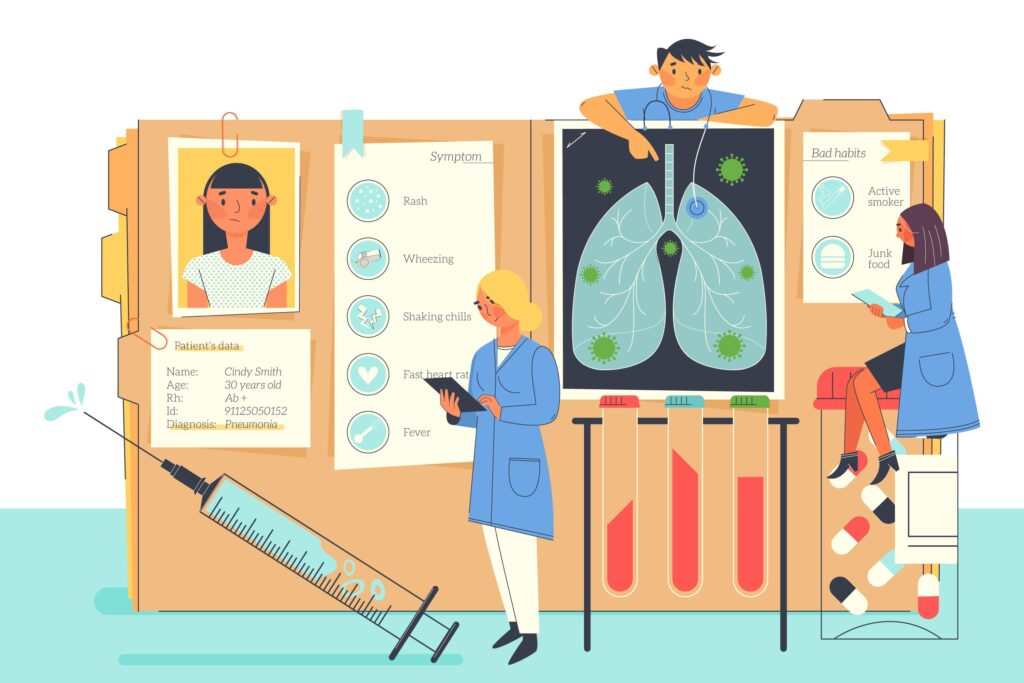
Table of Contents
Introduction
Hyperinflated lungs can be a concerning medical condition, affecting individuals of all ages. In this article, we will delve into the concept of hyperinflated lungs, exploring its causes, symptoms, diagnosis, and available treatment options. Let’s uncover the details of this condition that impacts the respiratory health of many.
What Are Hyperinflated Lungs?

Hyperinflated lungs, medically known as pulmonary hyperinflation, refer to a condition where the lungs become abnormally enlarged due to trapped air. This results in the expansion of lung tissue, making exhalation difficult. It’s essential to understand the causes behind this phenomenon.
Causes of Hyperinflated Lungs
- Chronic Obstructive Pulmonary Disease (COPD)
- Chronic Obstructive Pulmonary Disease (COPD) is a leading cause of hyperinflated lungs. This condition is characterized by chronic inflammation, airway obstruction, and lung damage, all of which contribute to pulmonary hyperinflation.
- Asthma
- Uncontrolled and severe asthma can lead to air trapping and hyperinflation. The inflammation and constriction of airways that occur in asthma can cause the lungs to hyperinflate.
- Emphysema
- Emphysema, a lung disease where the air sacs are damaged, is another common cause of hyperinflate lungs. It leads to increased lung volume and hyperinflation, often associated with smoking.
More Causes of Hyperinflated Lungs
- Chronic Obstructive Pulmonary Disease (COPD): COPD is a common cause of hyperinflated lungs. Conditions like emphysema and chronic bronchitis can result in the destruction of lung tissue, leading to increased lung volume.
- Asthma: Severe and uncontrolled asthma attacks can lead to hyperinflated lungs as a result of air trapping in the lungs.
- Smoking: Smoking is a major risk factor for developing COPD and hyperinflated lungs. The harmful chemicals in tobacco smoke can damage lung tissue.
- Alpha-1 Antitrypsin Deficiency: This genetic condition can result in a deficiency of a protective protein, making the lungs more susceptible to damage.
- Lung Infections: Chronic lung infections, such as tuberculosis or fungal infections, can lead to inflammation and hyperinflation.
- Lung Overuse: Conditions that require frequent deep breaths or the use of mechanical ventilation can also contribute to hyperinflated lungs.
Symptoms of Hyperinflated Lungs
- Shortness of Breath: One of the most common symptoms is difficulty breathing, especially during physical activity.
- Chest Tightness: Individuals with hyperinflated lungs may experience a sensation of chest tightness or discomfort.
- Wheezing: Wheezing is often present, particularly in individuals with underlying asthma or COPD.
- Chronic Cough: A persistent, chronic cough may be present, often accompanied by increased mucus production.
- Fatigue: Due to the increased effort required to breathe, individuals with hyperinflated lungs may experience fatigue.
Diagnosis and Treatment
Diagnosing hyperinflated lungs typically involves a combination of medical history, physical examination, and diagnostic tests. These tests may include:
- Chest X-ray: An X-ray can reveal lung hyperinflation and may identify any underlying lung conditions.
- Pulmonary Function Tests: These tests measure lung capacity and airflow, helping to assess lung function.
- CT Scan: A computed tomography (CT) scan can provide detailed images of the lungs and help identify any structural abnormalities.
Treatment of hyperinflated lungs primarily focuses on addressing the underlying cause and managing symptoms:
- Lifestyle Modifications: Quitting smoking, maintaining a healthy weight, and avoiding environmental pollutants are essential for managing hyperinflated lungs.
- Medications: Depending on the underlying condition, medications such as bronchodilators, corticosteroids, or antiviral drugs may be prescribed.
- Oxygen Therapy: In severe cases, supplemental oxygen may be needed to alleviate shortness of breath.
- Pulmonary Rehabilitation: This comprehensive program includes exercise, education, and counseling to improve lung function and overall well-being.
- Surgery: In some instances, surgical procedures may be necessary, such as lung volume reduction surgery for severe COPD.
Hyperinflated Lungs in Adults

Chronic Obstructive Pulmonary Disease (COPD)
- Chronic Obstructive Pulmonary Disease, including chronic bronchitis and emphysema, contributes significantly to hyperinflate lungs in adults. These conditions are marked by chronic inflammation, airway narrowing, and lung tissue damage.
Asthma
- Severe and uncontrolled asthma can result in air trapping, leading to hyperinflated lungs. The inflammation and constriction of airways in asthma exacerbate this condition.
Emphysema
- Emphysema, characterized by the destruction of air sacs in the lungs, often results in increased lung volume and hyperinflation. Smoking is a prominent risk factor for emphysema.
Hyperinflated Lungs in Children
Congenital Issues
- Children can have congenital hyperinflated lungs, where the condition is present from birth. This may be due to structural abnormalities in airways or lung tissue.
Asthma in Children
- Asthma is a common cause of hyperinflated lungs in children, often triggered by allergies, respiratory infections, or environmental factors.
Infections
- Respiratory infections, such as pneumonia, can lead to temporary hyperinflation in children, as the airways become inflamed and narrowed.
Mechanism Behind Hyperinflated Lungs

How Does Hyperinflation Occur?
- The primary mechanism behind hyperinflation in lungs is the inability to fully exhale air. This results from a combination of factors, including chronic inflammation, mucus buildup, and airway constriction.
Role of Air Trapping
- Air trapping is a pivotal component of hyperinflate lungs. It occurs when small airways in the lungs become narrowed, preventing complete exhalation, leading to trapped air and lung hyperinflation.
Symptoms of Hyperinflated Lungs
Shortness of Breath
- One of the predominant symptoms of hyperinflate lungs is shortness of breath, which is often exacerbated during physical activity.
Wheezing
- Individuals with hyperinflate lungs may experience wheezing, a high-pitched whistling sound during breathing.
Chest Tightness
- Hyperinflation can cause a sensation of chest tightness, making it uncomfortable to breathe.
Chronic Cough
- A persistent, chronic cough is a common occurrence in individuals with hyperinflate lungs.
Diagnosing Hyperinflated Lungs

Medical History
- To diagnose hyperinflation in lungs, doctors take a detailed medical history to understand the patient’s symptoms and potential risk factors.
Physical Examination
- During a physical examination, doctors may observe signs such as decreased breath sounds or wheezing.
Imaging Tests
- Imaging studies, including chest X-rays and CT scans, provide visual confirmation of lung hyperinflation.
Pulmonary Function Tests
- These tests measure lung function and determine the severity of hyperinflation.
Treatment Options for Hyperinflated Lungs
Hyperinflate lungs can be managed through various treatment options based on the underlying cause and the severity of the condition.
Lifestyle Changes
Smoking Cessation
- For individuals with hyperinflated lung’s due to smoking, quitting is a vital step in managing the condition.
Exercise and Weight Management
- Regular exercise and maintaining a healthy weight can improve lung function and reduce hyperinflation.
Managing Allergies and Irritants

- Avoiding allergens and irritants that trigger symptoms is crucial for those with hyperinflation lungs.
Medications
Bronchodilators
- Bronchodilators relax the airway muscles, making breathing easier for individuals with hyperinflation lungs.
Corticosteroids
- These anti-inflammatory medications reduce airway inflammation in some cases, helping to alleviate hyperinflation.
Breathing Exercises
Pursed Lip Breathing
- Pursed lip breathing techniques can improve airflow and reduce shortness of breath.
Diaphragmatic Breathing
- Diaphragmatic breathing exercises strengthen the diaphragm and enhance breathing efficiency.
Surgical Interventions
Lung Volume Reduction Surgery
- In severe cases, lung volume reduction surgery can remove damaged lung tissue, reducing hyperinflation.
Lung Transplantation
- Individuals with end-stage lung disease may require a lung transplant to address hyperinflation lungs.
Conclusion
Hyperinflated lungs can present significant challenges, but with the right diagnosis and treatment, individuals can effectively manage their symptoms and enhance their quality of life. Lifestyle changes, medications, and breathing exercises play vital roles in addressing this condition, promoting better respiratory health.
FAQs
- Is hyperinflated lungs a life-threatening condition?
- Hyperinflate lungs can be severe, especially when linked to severe lung diseases.
- Can children outgrow hyperinflate lungs?
- In some cases, children with hyperinflate lungs due to infections or allergies may outgrow the condition as they age.
- Are there any natural remedies for managing hyperinflate lungs?
- While lifestyle changes and breathing exercises can be beneficial, it’s crucial to consult a healthcare professional for a personalized treatment plan.
- Is surgery the only option for severe cases of hyperinflated ?
- Surgery is one option for severe cases, but it’s typically considered when other treatments have not been effective.
- Can hyperinflated be prevented?
- Preventing hyperinflated often involves managing the underlying causes, such as quitting smoking and effectively managing asthma.
Pingback: Kidney Cancer Survival Rate: What You Need to Know in 2023